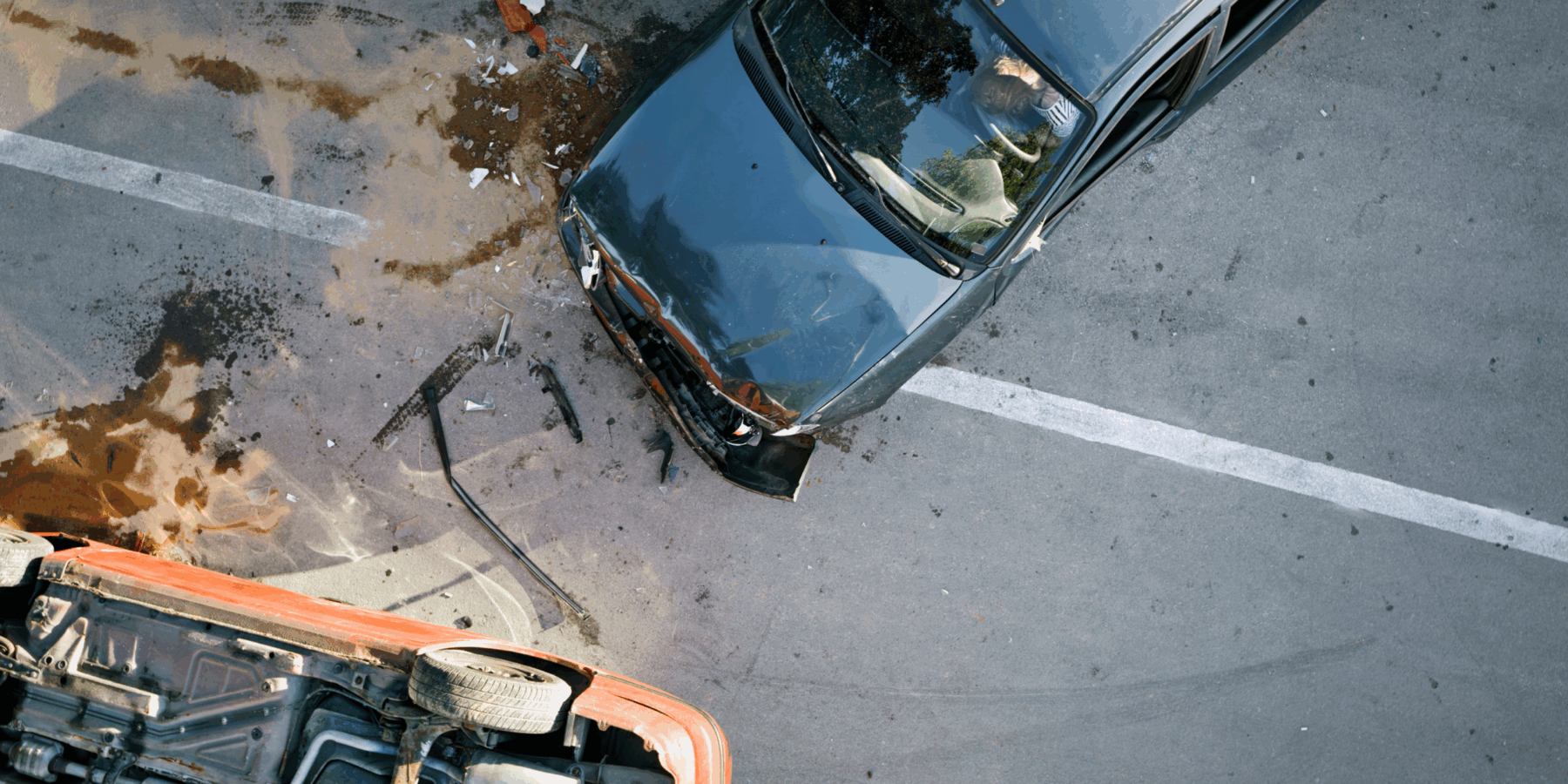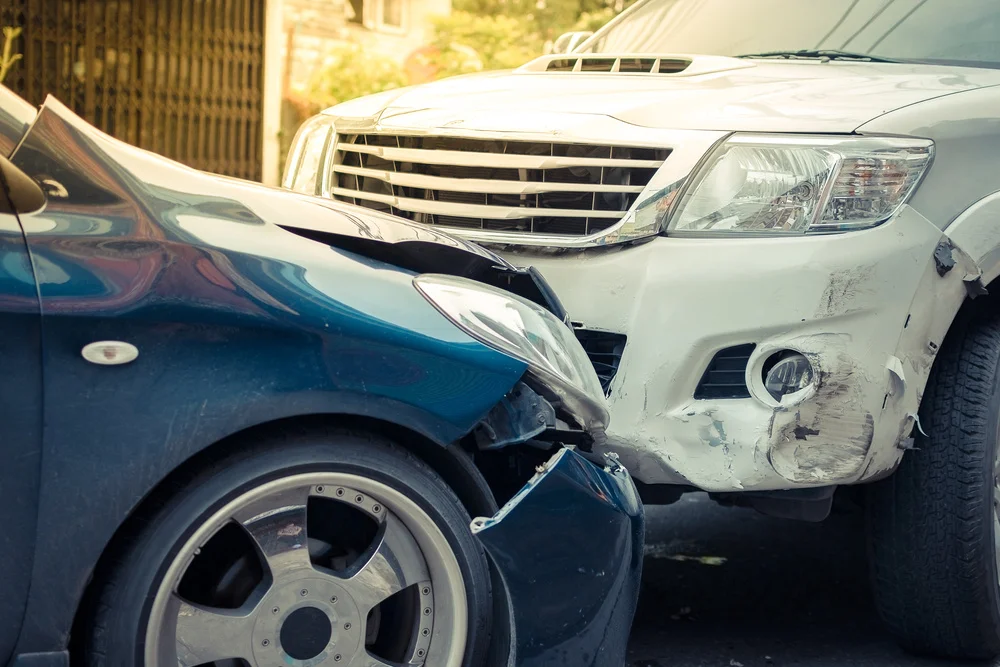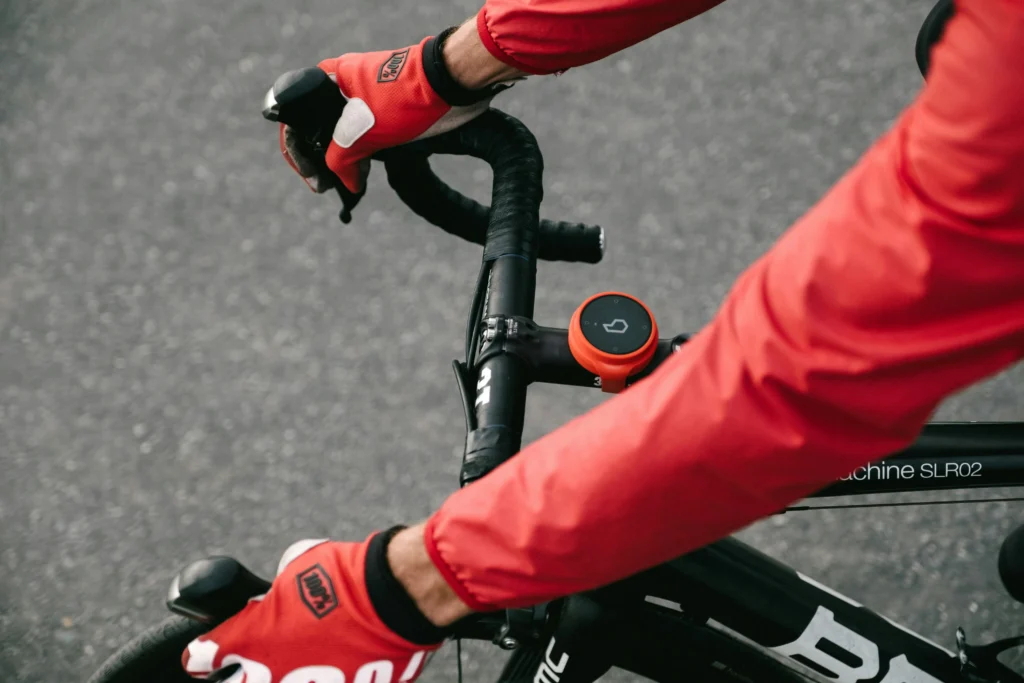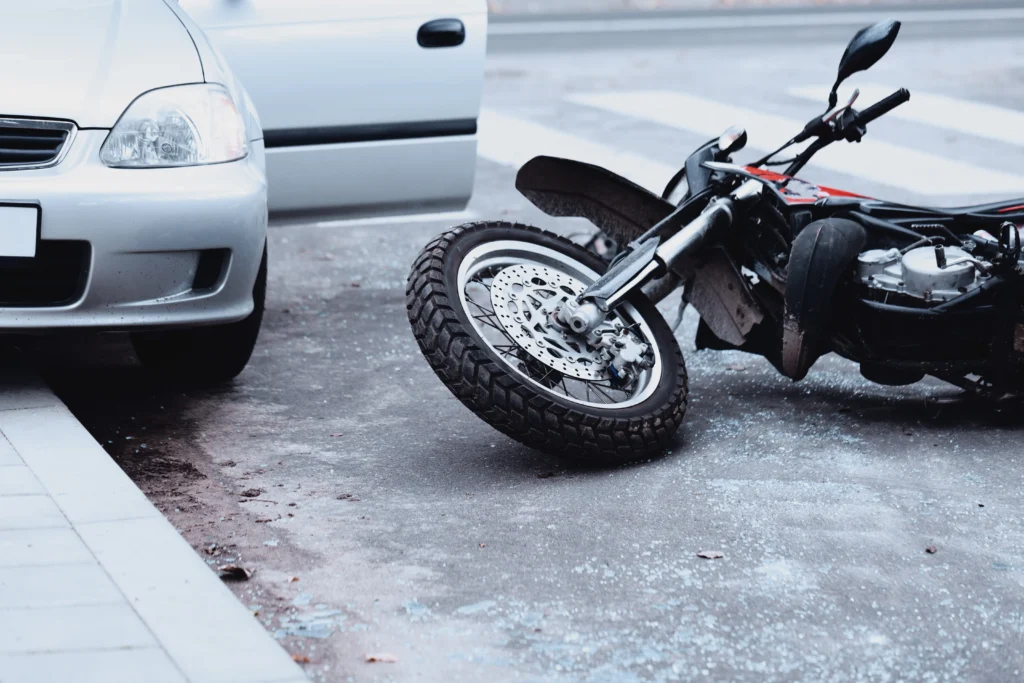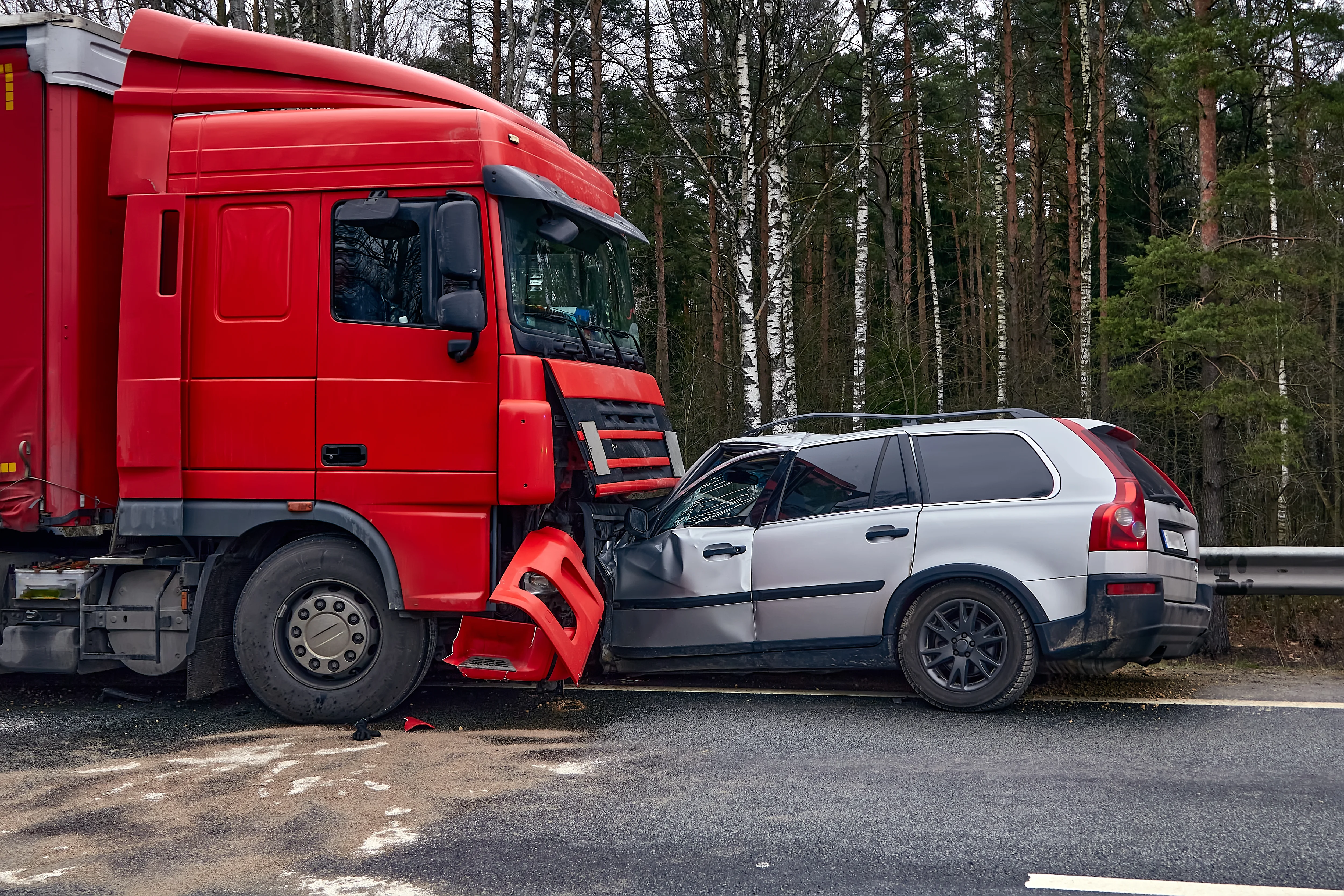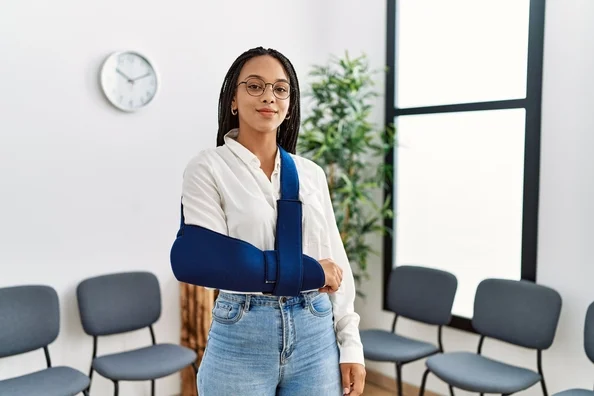Washington Rideshare Accident Lawyer Near You – Protecting Passengers from Spokane to Seattle
If you were injured in a Washington rideshare accident involving Uber, Lyft, or another app-based driver, fast legal action matters. Whether the crash happened on I-5 through Tacoma, outside a Belltown apartment, or near Gonzaga in Spokane, Bernard Law Group holds rideshare companies and insurers accountable. We understand the insurance maze, and we don’t wait on corporate responses, we act.
As rideshare traffic grows from Seattle to Spokane Valley, crashes involving app-based drivers continue to rise. A U.S. Department of Transportation report highlights how new transportation technologies, including rideshare platforms, bring both convenience and risk. When that risk turns into injury, legal action is your next step.
We investigate quickly, preserve trip data, and pursue the highest available compensation. Call (206) 752-2233 now for a free case review. Don’t delay. Every day that passes gives rideshare insurance teams more control over your outcome.
Washington Rideshare Accident Victims Include More Than Just Passengers
You do not have to be riding in an Uber or Lyft to file a claim after a rideshare crash. Many Washington residents hit by app-based drivers are pedestrians, cyclists, or motorists just going about their day. These victims are often overlooked, and insurance carriers use that confusion to their advantage. We don’t allow that.
If you were struck by a rideshare driver on Rainier Avenue, South Division Street, or outside your own driveway, your rights still hold. The legal difference comes down to whether the driver was logged into the app and whether they were en route to a pickup. That’s not information you’ll easily get on your own. Our team demands these records immediately, before they’re gone. According to the Washington State Traffic Safety Commission, pedestrian deaths in the state have reached record highs. Rideshare-related collisions are a factor.
Injured Pedestrians in Rideshare Drop Zones Can Recover Full Compensation
Pedestrians often get struck in areas where Uber and Lyft drivers pull into curb space illegally or drive distracted while accepting fares. These accidents happen fast, and victims are left with head trauma, broken bones, or worse. Insurance companies try to avoid payouts by shifting blame to the pedestrian. We stop that narrative.
These cases are common near Seattle’s Capitol Hill nightlife corridor, Spokane’s North Monroe Street, and the pickup lanes near SEA-TAC. If you were hit while walking to work, crossing legally at a signal, or loading your car, you can file a Washington rideshare accident claim and pursue damages. We move immediately to obtain driver cell phone records, app status, and dashcam footage.
App Use and Driver Distraction Create Hazards for Pedestrians
When rideshare drivers receive trip notifications, they often take their eyes off the road. One second is enough to cause a serious injury. Most rideshare apps encourage fast responses, which leads drivers to glance down at their phones while moving through dense traffic or approaching intersections. These risks make walking near these vehicles dangerous, especially in downtown Seattle or near Spokane’s Riverfront Park.
A recent CDC study on distracted driving reinforces what we see in every case. App interaction behind the wheel continues to play a central role in pedestrian collisions involving Uber and Lyft.
Vehicle Drivers and Bicyclists Frequently Get Hit by Rideshare Operators
Many Uber and Lyft crashes don’t involve passengers at all. Most happen during app “waiting periods” when the driver is between fares. If you were sideswiped, rear-ended, or cut off by a rideshare vehicle, you still have a case. But Lyft and Uber won’t accept responsibility unless the trip was active, which is why quick legal action is critical.
Drivers on SR-167, I-90, or Capitol Boulevard in Tumwater regularly face lane changes without warning from rideshare vehicles. Cyclists on local corridors like Stone Way North in Seattle or the Spokane Centennial Trail are often forced into traffic by aggressive rideshare maneuvering. We have recovered substantial damages for victims in these exact scenarios.
Crashes Involving App-Logged Drivers Are Covered by Commercial Insurance
Uber and Lyft provide commercial liability coverage when drivers are logged into the app. But if they’re between trips, their coverage shifts. This is where most victims lose their claims. Insurance adjusters rely on app status technicalities to deny payouts. We do not let that happen.
We obtain trip activity reports, confirm timestamps, and match them to the crash. These details often expose that the driver was available for hire, which triggers higher insurance limits. The Consumer Financial Protection Bureau outlines how rideshare policy layers create gaps that lawyers must bridge for full recovery.
Common Rideshare Collision Scenarios Involving Non-Passengers
We see repeat patterns in rideshare injury cases across Washington. These aren’t random. Rideshare drivers back into vehicles while distracted in parking lots, collide with cyclists while turning across unprotected bike lanes, and speed through lights to reach their next pickup. Victims suffer lifelong consequences because a driver wanted to shave 30 seconds off their ETA.
We build claims with precision in these high-risk zones. Locations like Spokane Valley Mall, Ballard’s Market Street, and Lakewood’s Bridgeport Way create the perfect storm of pedestrian density and rideshare volume. These are not accidents. They’re preventable events caused by distracted, app-focused drivers.
Every Victim Type Has Legal Rights Under Washington Law
It does not matter whether you were inside a car, walking across a crosswalk, or riding your bike home from school. If a rideshare vehicle hit you, you may have grounds for a claim. This includes children struck in neighborhoods, workers hit in driveways, and seniors walking through parking lots.
Do not assume the rideshare company will step up. They often hide behind contractor language and policy loopholes. Bernard Law Group does not let them. We push claims forward quickly and structure cases to hold drivers and platforms accountable under Washington law. Call (206) 752-2233 now before crucial evidence disappears.
Understanding Insurance Liability After a Washington Rideshare Accident
One of the most confusing parts of any Washington rideshare accident is figuring out who pays. Uber and Lyft use layered insurance systems that change based on the driver’s app status. Without legal pressure, these companies and their insurers often deny or delay claims, hoping victims will give up. At Bernard Law Group, we don’t let that happen.
After a crash, time matters. If you wait, critical app data, dashcam footage, and driver trip logs could vanish. This information determines which policy applies and how much coverage is available.
App Status in Uber and Lyft Crashes Directly Impacts Insurance Coverage
Uber and Lyft divide liability coverage into tiers based on whether the driver is off the clock, waiting for a fare, or transporting a passenger. Each phase activates a different level of insurance, and every insurer involved has its own playbook for denying claims. If you don’t have an attorney pushing for records immediately, you may never see the policy that actually applies to your case.
Uber and Lyft Use Complex Coverage Structures to Limit Payouts
Both companies rely on third-party insurers to manage claims. These insurers often communicate in vague terms and use technicalities to deny legitimate cases. We cut through that by using legal discovery tools and subpoenas to expose coverage details the companies try to hide.
When the Driver Is Logged Out of the App
If the driver was not logged into the app at the time of the crash, only their personal auto insurance applies. These policies usually meet Washington’s minimum liability limits but often fall short when serious injuries are involved. Most personal insurers also deny claims when they learn the vehicle was being used for commercial purposes. That denial forces victims to explore other options like uninsured motorist coverage or third-party claims.
We move quickly to confirm whether the app was closed and whether the personal policy had valid coverage. When these limits are too low to cover your losses, we investigate every path for additional recovery.
When the Driver Is Logged In and Waiting for a Ride Request
If the app is on and the driver is available for rides but hasn’t yet accepted one, Uber and Lyft offer limited liability coverage. Typically, this includes $50,000 for bodily injury per person, $100,000 per accident, and $25,000 for property damage. These limits are often not enough to cover hospital bills, let alone long-term recovery or missed income.
We fight to access platform records that confirm whether the driver was in this “waiting” phase. Insurers won’t hand over that information unless pressured. You can’t afford to accept a reduced payout based on incomplete data.
When the Driver Is En Route or Transporting a Passenger
This phase unlocks Uber and Lyft’s highest insurance coverage. When a driver accepts a ride or has a passenger in the car, both companies provide up to $1 million in third-party liability coverage. This policy also includes uninsured and underinsured motorist protection in many cases. But rideshare companies won’t acknowledge that unless forced.
We use subpoenas and discovery to obtain trip acceptance records, GPS logs, and app communication data. This evidence proves the driver was working and that full policy limits apply. Without that pressure, insurers will try to settle for a fraction of the coverage you’re owed.
Drivers Often Lack Adequate Personal Coverage to Pay for Your Injuries
When rideshare drivers are not logged into the app, their personal policy is the only coverage available. These policies often carry state minimum limits, which are nowhere near enough to pay for a hospital stay or months of lost wages. If you were hit by a driver between trips, we work fast to identify any umbrella or business-use coverage that might apply.
In many cases, our team also investigates whether the driver misrepresented the vehicle’s commercial use to their insurer. That violation can lead to policy exclusions that open the door to secondary claims. These investigations take time, which is why fast legal action is crucial. We frequently recover damages through uninsured and underinsured motorist policies that apply when app-based drivers fall short.
Victims Can Also File Claims Through Their Own UM and UIM Policies
Washington drivers and pedestrians injured in rideshare crashes may also access their own uninsured or underinsured motorist coverage. This applies when the rideshare driver’s policy doesn’t cover the full cost of your injuries. But your insurer won’t volunteer this option. We pursue these claims aggressively and ensure your own policy works in your favor, not against it.
The Office of the Insurance Commissioner for Washington confirms that underinsured motorist coverage is one of the most effective ways to bridge gaps when the at-fault driver lacks sufficient protection. Still, these claims are frequently delayed or reduced without legal advocacy. Our firm handles these negotiations directly, so you don’t deal with adjusters while recovering from your injuries.
Uber and Lyft Will Not Offer Fair Settlements Without Pressure
Uber and Lyft have legal teams trained to stall, minimize, and undervalue every claim. They shift blame to drivers, deny trip activity, and use vague policy language to avoid payment. Without a focused legal strategy, victims are left negotiating in the dark. We bring light to that process and force accountability from both the drivers and the platform.
From the moment we take your case, we send preservation letters, request app records, and coordinate all insurer communication. You don’t have to chase down claim numbers or fight with representatives. We take that weight off your shoulders and fight to recover medical bills, lost income, pain and suffering, and every related damage tied to the crash.
Why Acting Quickly Helps Secure Stronger Rideshare Settlements
Trip data, navigation logs, and phone records can all disappear within days. Uber and Lyft are not required to preserve these materials unless forced by legal request. The sooner we begin, the more leverage we gain. Delay helps the other side. Speed helps your claim.
Our attorneys understand every phase of a Washington rideshare accident. We don’t just build cases, we anticipate how insurers respond, then push back harder. Call (206) 752-2233 today before vital coverage records are lost. Your recovery depends on what happens next.
Where Washington Rideshare Accidents Happen and Why These Crash Zones Keep Growing
Across Washington, Uber and Lyft accidents are not limited to urban gridlock or late-night bar traffic. These crashes happen every day in school zones, suburban neighborhoods, and along busy state routes. From Bellingham to Vancouver, app-based drivers cover long distances and often operate in areas not designed for frequent pickup and drop-off traffic. When crashes occur, they are rarely random. They follow patterns.
Washington’s rideshare accident rate keeps climbing, especially in areas with high pedestrian density or heavy traffic volume. A recent study from the University of Chicago Booth School of Business found that rideshare expansion increases total crash risk in major cities. The patterns we see in King, Pierce, and Spokane counties prove the same holds true across our state.
High Impact Zones in Seattle Where Uber and Lyft Collisions Are Most Common
Seattle neighborhoods like Capitol Hill, Belltown, South Lake Union, and the U-District face nonstop rideshare traffic. Narrow roads, frequent stops, and constant pickups create the perfect environment for sudden turns, illegal stops, and distracted driving. Accidents involving rideshare vehicles spike on weekends, especially around Pike Place Market, Lumen Field, and along Denny Way near I-5.
We frequently handle cases from these zones involving injured pedestrians, rear-end collisions in traffic backups, and passengers hurt during hard stops. Every one of these cases shows how app-based driving changes the rhythm of local streets. Uber and Lyft drivers often ignore basic traffic law when they chase time and location bonuses.
Downtown Gridlock and Overcrowded Curb Space Increase Crash Risk
Drivers operating under pressure from surge pricing and app notifications often double-park or swerve into loading zones without checking traffic. This behavior has led to serious crashes along 3rd Avenue, Olive Way, and Madison Street. Washington’s older city infrastructure was not built to handle today’s volume of rideshare traffic. That mismatch puts everyone at risk.
According to Seattle Department of Transportation data, pedestrian injury collisions continue to rise in areas where rideshare volume is highest. We build rideshare crash claims using public traffic data, intersection records, and driver cell data when necessary.
Why Suburban and Highway Rideshare Accidents Keep Increasing in Washington
Many Uber and Lyft crashes don’t happen downtown. They happen in areas where infrastructure hasn’t caught up. Places like Kent, Lynnwood, Federal Way, and Lacey see regular collisions involving drivers entering neighborhoods or speeding through side streets to reach pickups. These crashes often involve bicyclists, parked cars, or drivers backing out of residential driveways.
Further east, rideshare crashes are rising on stretches of SR-14, SR-167, and SR-18. Drivers looking at maps or toggling between apps often fail to brake in time or misjudge gaps in traffic. These aren’t isolated incidents. They are part of a pattern we’ve documented across hundreds of claims statewide.
Washington Freeways and Arterials Are Not Designed for App-Based Driving
Long-haul rides and trips across county lines are common for Uber and Lyft drivers. But many of these drivers make unsafe lane changes or exit last-minute at high speeds. We regularly handle rideshare crash cases on I-90, I-405, and the congested SR-520 corridor. These are not just car crashes. They involve complex insurance layers, disputed fault, and serious injury.
We gather dashcam footage, 911 dispatch logs, and accident reports to reconstruct what happened. These crashes often involve third-party drivers, rideshare passengers, and commercial vehicle operators caught in the chain. Washington rideshare accident claims in these zones require fast investigation and deep knowledge of how trip timing impacts liability.
Pickup and Drop-Off Hotspots Near Transit Hubs and Event Spaces
Rideshare-related crashes cluster around places where people come and go fast. This includes ferry terminals, light rail stops, convention centers, stadiums, and college campuses. App drivers jockey for curb space and often violate local traffic laws to squeeze in quick pickups.
In Spokane, we’ve seen collisions near the Spokane Arena and Gonzaga University. In Tacoma, rideshare accidents happen regularly outside the Dome District and Tacoma Mall. These crashes often involve distracted driving, double-parking, or abrupt U-turns across multiple lanes. The combination of foot traffic and poor driver visibility leads to real harm.
Event Traffic and Rideshare Surge Pricing Create Dangerous Conditions
During sports games, concerts, or weather emergencies, Uber and Lyft offer financial incentives to keep drivers moving. But that also encourages reckless driving in high-foot-traffic zones. Passengers may be picked up in bus lanes, bike lanes, or loading docks never intended for private cars. That creates dangerous conditions for everyone.
We have handled claims where the passenger was hurt before they entered the vehicle or when an Uber driver pulled into oncoming traffic to avoid gridlock. These injuries are preventable. They are caused by profit-driven systems that reward unsafe driving.
Call (206) 752-2233 now if your Uber or Lyft crash happened in one of these rideshare crash zones. Our legal team has investigated collisions across Washington, and we act fast to preserve traffic data, phone records, and app logs. Every rideshare accident needs a firm that knows the road and fights for results.
Call a Washington Rideshare Accident Lawyer Who Takes Action Now
If an Uber or Lyft crash left you injured, don’t wait. Every delay gives their insurance team more time to spin the facts and shift blame. At Bernard Law Group, we act immediately to protect your rights and preserve the evidence that supports your claim. Whether your accident happened near Spokane Valley Mall, in a SeaTac parking garage, or on your way home from work in Bellevue, we’re ready to move.
Our team has recovered over $500 million for injury victims across Washington. We don’t rely on guesswork. We rely on facts, aggressive strategy, and local knowledge. When you hire us, you work directly with a rideshare accident attorney who understands how Uber and Lyft operate in Washington’s legal system. This is not a cookie-cutter approach. This is your case, your injuries, and your future. We fight for all of it.
Contact the Bernard Law Group now at (206) 752-2233 or submit your case here. Let us take the next step while you take care of yourself.
Practice Areas
Trust Us With Your Personal Injury Claim
If you or a loved one have been injured, Bernard Law Group will fight for you every step of the way. We will give our all to secure the compensation you rightfully deserve.
Contact usfor a free consultation.
Phone: (206) 312-3908
